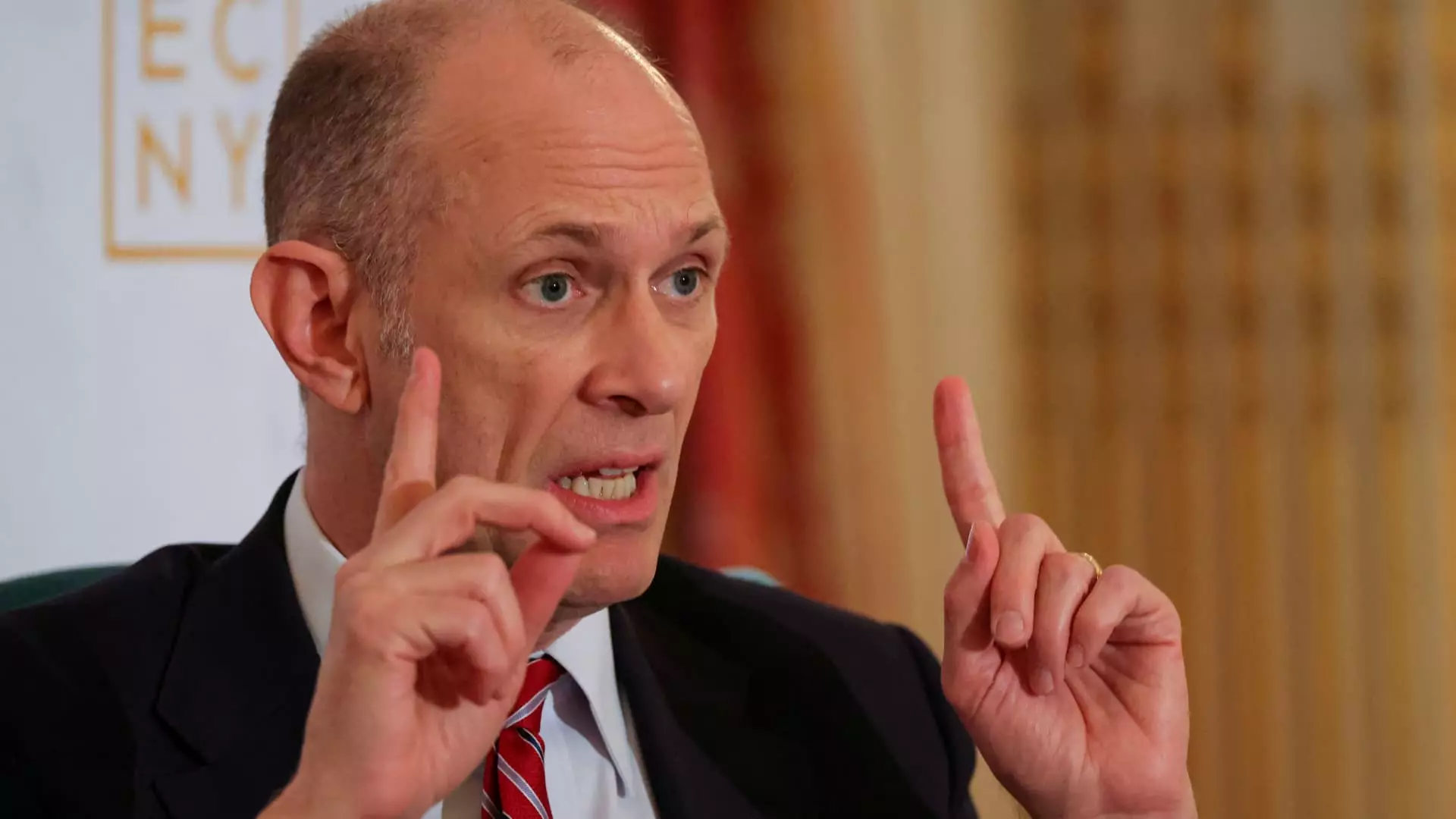In an era marked by fluctuating global dynamics and unpredictable governance, the recent statements from Chicago Federal Reserve President Austan Goolsbee have illuminated the intricate relationship between fiscal policies and their subsequent impact on economic stability. President Trump’s ambitious tariff threats have been nothing short of a political spectacle that throws a wrench into the already delicate machinery of economic policymaking. The ramifications of these tariffs do not merely ripple through the stock market; they threaten to forge a new reality for inflation rates and employment stability, having profound implications for the average American.
The Unbearable Weight of Tariffs
What Goolsbee articulated during his CNBC interview was more than a casual observation—it was a foreboding warning rooted in economic theory and situational analysis. By suggesting that the current suite of tariffs could usher in a period of stagflation, Goolsbee brought to light the harsh reality that protectionist measures can backfire, creating an environment where prices rise even as economic growth stalls. For the average citizen, this means facing a double-edged sword where purchasing power diminishes, and job security becomes a distant hope rather than a guarantee.
The aggressive push for a 50% tariff on European goods serves as a troubling reminder of how capricious politics can intrude upon commerce. Coupled with the proposed 25% tax on iPhones not manufactured in the U.S., the strategy underscores a cavalier disregard for the downstream consequences. Yes, businesses like Apple have diversified their manufacturing processes, but the crux of the matter remains that American consumers—and particularly low- to middle-income households—are the ones who will bear the brunt of these economic maneuvers.
Central Bank’s Tug-of-War: Dilemmas in Policy Response
Central bankers are often viewed as the steady hands guiding the ship of economic policy. However, Goolsbee’s hesitance to commit to any particular course of action reveals that the Federal Reserve is hardly in a position of strength. Instead, they find themselves walking a fine line between responding proactively to fiscal policy shifts and remaining reactive to the incoming waves of economic uncertainty.
The phrase “everything’s always on the table” speaks volumes about the unpredictable currents affecting interest rates. Goolsbee’s careful choice of words signals a critical dilemma: does the Federal Reserve risk taking bold action on interest rates, or does it play the wait-and-see game amidst a rapidly changing landscape? The distinction between averting immediate crisis and fostering long-term stability grows increasingly blurry.
The anticipated rate cuts, once regarded as a near certainty, are now sullied with doubt. Markets are gearing up for forthcoming adjustments, yet they teeter on the edge of uncertainty, further inflating the highs and lows of economic sentiment.
Optimism or Illusion? Goolsbee’s Economic Outlook
While Goolsbee maintains an optimistic stance regarding long-term economic growth, his position raises an array of questions regarding the feasibility of such a perspective. The hope that markets will stabilize and that inflation will return to a manageable 2% may seem reassuring, but it fails to address the immediate anxiety permeating the economic landscape. For individuals struggling with the realities of higher prices and enhanced scarcity, this optimism offers little comfort.
Goolsbee’s assertion that rates could be “a fair bit below where they are today” within a year or so appears optimistic, if not downright naive. The crushing weight of escalating tariffs may likely drive inflation higher, suffocating purchasing power and rattling consumer confidence. While Goolsbee remains hopeful for a stable economic environment, one can’t help but wonder if this dream faces imminent peril.
Ultimately, Goolsbee’s thoughtful balancing act between hopefulness and caution makes it clear that we exist in a complex moment in economic history—one where the whims of leadership can strike without warning, dictating the economic fate of millions. Let’s hope that wisdom rather than whims guides the future of fiscal policy at a critical time like this.

